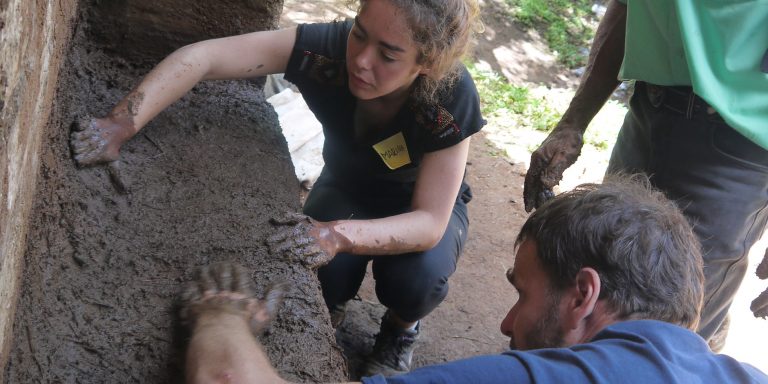A key problem with improved cookstoves is that they can go unused, or used in unintended ways. While many cookstoves are able to reduce harmful emissions and fuel consumption, their designs do not always prioritize their users’ needs. As a result, few have been able to displace existing cooking technologies. The new stoves are competing with cooking methods that have been adapted to meet cooks’ needs over centuries, and in some cases millennia. Even the improved stoves that have seen greater uptake often don’t fully meet cooks’ needs. They are used to supplement traditional stoves instead of fully replacing them, which mitigates the intended benefits of cleaner, more efficient combustion.
To bridge this gap, my team of researchers and I at Oregon State University developed a usability testing protocol to guide improved cookstove design and implementation. We had support from Dr. Nordica MacCarty, the National Science Foundation (NSF), and International Lifeline Fund (ILF).
The usability testing protocol builds on technical and safety cookstove testing standards already under development to encourage more holistic, standardized cookstove evaluation and development that considers both user and technical design criteria. In addition to traditional usability testing techniques, this protocol also incorporates elements of ethnographic methods from anthropology, which should allow foreign engineers to better understand what questions to ask users users – and more importantly, how to ask them – to develop a deeper understanding of user needs and to balance them more effectively with technical performance in stove designs. The flexibility offered by these methods allows the test to be more easily adapted to the nuances of a given cooking culture or technology, as well. Portions of this work will be incorporated into an upcoming International Organization for Standardization (ISO) standard for cookstove testing to help get it in front of the practitioners it is intended for.
While the protocol can’t offer explicit design guidance for cookstoves used in every context around the world, it does offer engineers a way to take advantage of proven practices from traditional usability testing and the social sciences to make more informed design decisions. In addition, the existence of a standard terminology and testing procedure to characterize cookstove usability should give practitioners a way to communicate and share their work more easily, as well as a baseline upon which to improve their work and the standard practices they use in the future.
Developing this tool was important to us as it represents a step toward improving standards in the field of engineering for global development. Engineering standards dictate everything from how to design web site interfaces to how strong the seat belt in your car must be, and have guided engineering work for decades. Standards are one of the reasons we can trust the quality and performance of the products we use everyday. In engineering for global development, however, an emphasis on improving standardization is relatively new. I would argue that this oversight was glaring because careful, quality design work is even more critical in this sector than many others. In global development technology there are fewer existing products on which to model new designs. And designers often come from different cultures and backgrounds than the users of their products, meaning they have less inherent understanding of what people want or need.
With this in mind, greater standardization in international development is not only necessary to improve people’s lives through effective design, but must be done differently than in developed industries to accommodate the practical constraints faced by designers working in development.
This protocol is a small step towards standardization in humanitarian engineering applications, but I hope that the principles behind it – better design through the promotion of standardized best-practices, as well as the need for standards that are flexible and appropriate for humanitarian engineers – can be applied across the sector to improve the way we work and the impact we can achieve.
Cookstove Usability Testing Protocol Downloads
Cookstove Usability Testing Protocol (pdf)
Cookstove Usability Testing Protocol Data Collection Form (pdf)
Usability Testing Protocol Data Processing Spreadsheet (xlsm)
Please see Oregon State University’s site for future updates to these resources.
About the Author
Nick Moses has worked with institutional biomass cookstoves since 2013, and holds a dual master’s in mechanical engineering and applied anthropology from the Oregon State University Humanitarian Engineering Program.


One of the key issues involved in the roll-out of ICS is that swathes of households in low-income countries are convinced that, although they may not like it, a smokey house environment inhibits biting insects. I’ve had quite a few householders tell me why smoke is a good thing, for this and other reasons.
Whether this is correct or not, beliefs about the beneficial effects of smoke directly contradict what NGO/health workers tell them about household air pollution (HAP); I wonder if you took this into account in your research?
Hi John, thanks for the comment. The use of smoke to repel insects is actually one of the criteria we included in the protocol. There’s a section dedicated to location-specific user needs like this one (which can be expanded to include other/uncommon, but important, needs we haven’t identified).
Very useful information.